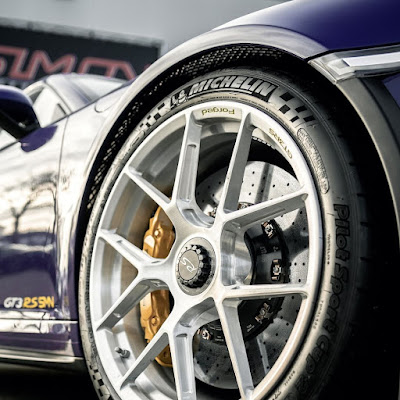What are tubeless tyres, and Why use them?
Tubeless tyres are those which do not have a tube inside them. The tyre is directly mounted on the wheel rim. A valve is provided in the wheel rim for inflating and deflating the tyres. If you're thinking about switching to tubeless tyres, there are a few things you need to know. First, not all bikes are compatible with tubeless tyres. You'll need a bike with tubeless-specific rims to use them. Second, setting up tubeless Bridgestone Tyres Reading can be tricky the first time you do it. You'll need to use a special tubeless rim tape and sealant, and it's often best to get help from a mechanic or someone who's done it before.
Finally, once you've switched to tubeless Bridgestone Tyres Reading. You'll need to be careful not to puncture the tyre. The sealant inside the tyre will plug up most small holes, but if you get a big hole, the tyre will go flat.
Overall, tubeless tyres are a great option for many riders. They offer some real benefits in terms of weight, puncture resistance, and rolling resistance. If you're thinking about making the switch, do your research and make sure your bike is compatible with tubeless tyres. Once you've made the switch, you'll never go back.
Advantages:
1. No risk of puncture: Since there is no tube inside the tyre, even if a sharp object is piercing the tyre, air will not escape from it, as in the case of tubed tyres. Hence, there is no risk of puncture.
2. Better grip: Tubeless tyres offer better grip on the road than tubed tyres. In tubed tyres, the tube gets deformed when the tyre is under pressure, which affects the grip. Tubeless tyres do not have this problem.
3. Better handling: Tubeless tyres offer better handling and cornering than tubed tyres. This is because tubeless tyres have a lower rolling resistance.
Disadvantages:
1. Difficult to install: Tubeless tyres are difficult to install compared to tubed tyres. They need to be mounted on the wheel rim with great precision. Any mistake can result in air leakage.
2. Expensive: Tubeless tyres are more expensive than tubed tyres. They are more complex and require a more sophisticated manufacturing process.
3. Requires special tools: Tubeless tyres require special tools for installation and removal. Hence, they are not convenient for people who do not have access to these tools.
How to Master Tubeless Tyre in 6 Simple Steps
Step 1: Get your hands on the right equipment.
First and foremost, to convert your tyres to tubeless, you need some specific equipment. This includes a tubeless tyre converter (or valve), tubeless rim tape and sealant.
Step 2: Clean your rims and tyres.
Before converting your Tyres Reading, it’s important to clean both your rims and tyres well. Use a degreaser or alcohol wipe to get rid of any dirt or grease, then allow them to dry completely.
Step 3: Tape your rims.
If you’re using a standard tube-type tyre, it’s important to tape your rims before you start. This will help to create a good seal between the tyre and rim. Use a good quality rim tape, making sure that it covers the entire circumference of the rim.
Step 4: Fit the tubeless valve.
Next, fit the tubeless valve onto the tyre. This can be tricky if you’re not used to it, but you need to make sure that it’s seated properly and that the grooves on either side line up with the valve hole in the tyre.
Step 5: Inflate your tyres.
Using a track pump or CO2 canister, inflate your tyres until they’re at their recommended pressure. You should check that the bead of the tyre is seated correctly on the rim all the way around.
Step 6: Add sealant and go!
Finally, add your sealant of choice to the tyres (following the manufacturer’s recommendations), and you’re good to go! Remember to check your tyre pressure regularly and top up the sealant as needed.
Final takeaway :
Tyre fitting is the process of mounting a tyre onto a wheel. It is usually done by a tyre technician in a tyre shop. A tyre technician will use various tools to mount the tyre, including a tyre iron and a torque wrench. The process of fitting a tyre usually takes less than 10 minutes.
The most important part of tyre fitting is ensuring that the tyres are properly inflated. A not properly inflated tyre can cause several problems, including poor handling and reduced fuel economy. It is therefore important to check the air pressure in tyres regularly.



Comments
Post a Comment